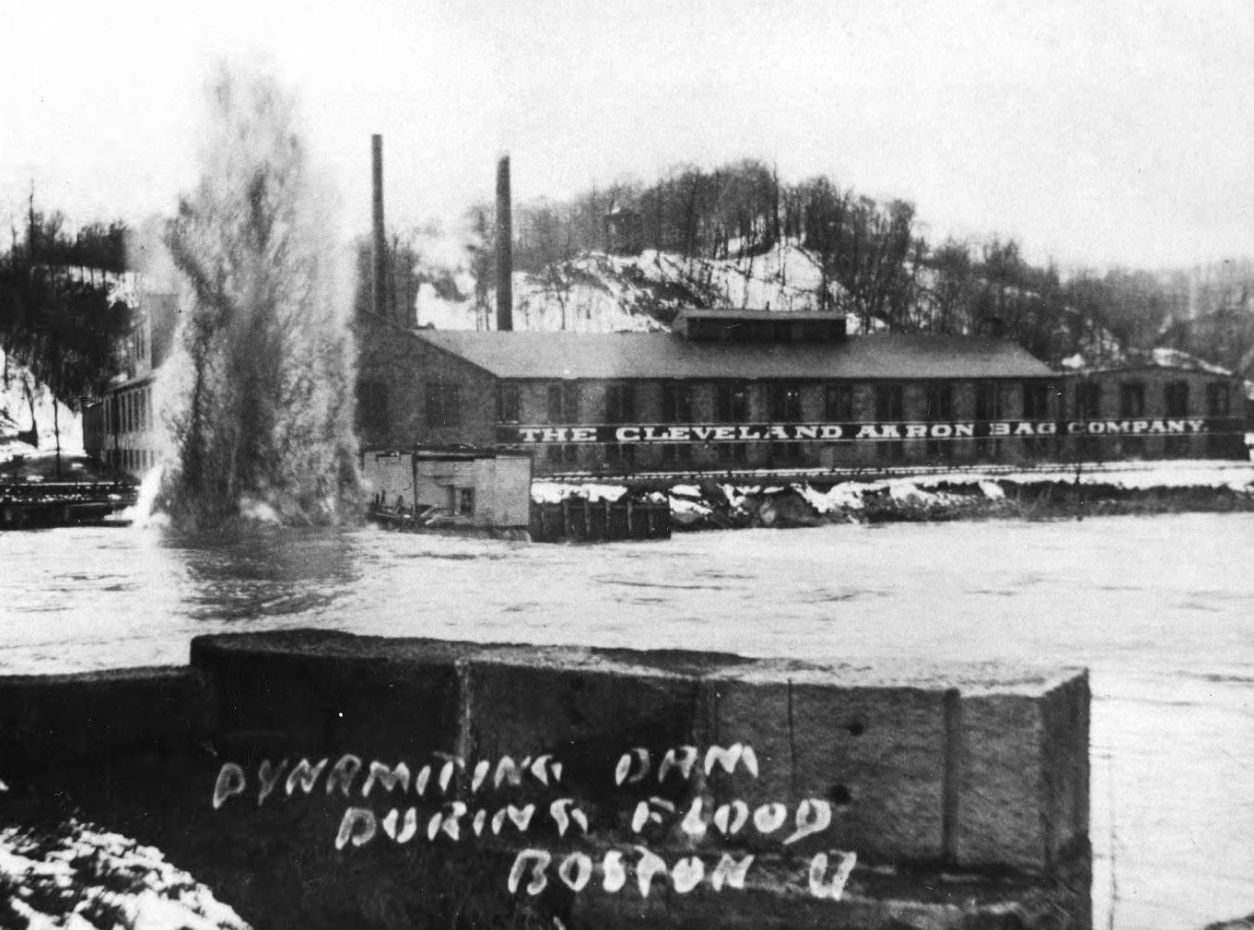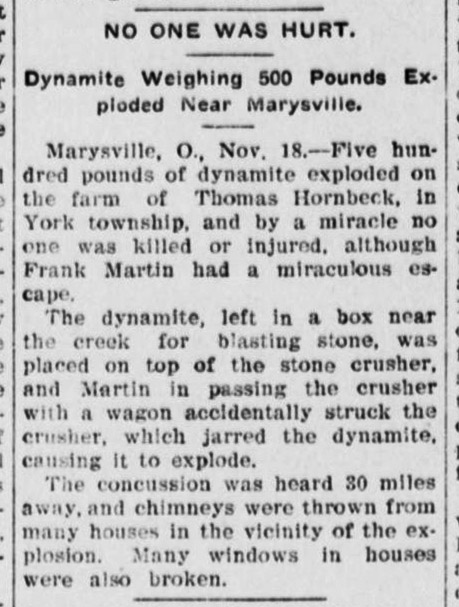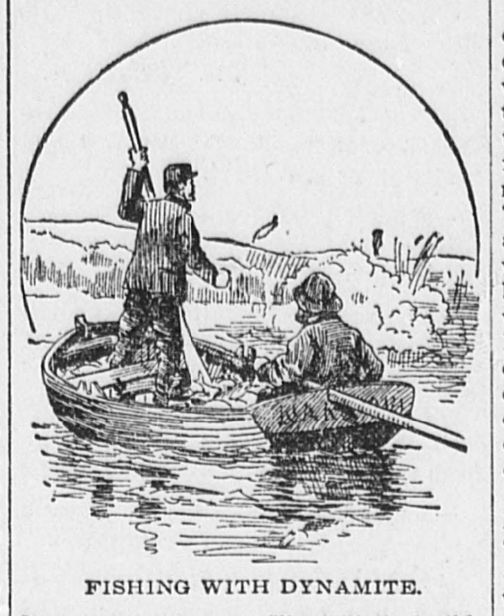Blast From the Past: Farming with Dynamite

One fine November day in 1905, farmhand Frank Martin was passing a stone crusher next to a creek–probably Bokes Creek in York Township, Ohio. Riding atop his wagon, he had a close call with the stone crusher, causing it to jostle. On top of the stone crusher, however, sat 500 pounds of dynamite. Set aside for blasting boulders, the package’s disturbance led to its detonation moments later.

Neighbors up to thirty miles away reported hearing the blast. People as far as Marion, Delaware, Bellefontaine, Kenton, and certainly nearby Marysville would have heard the noise. Chimneys and windows were ripped from their places and destroyed in nearby homes, and likely that stone crusher was blown to smithereens. It was a miracle then, the Hillsboro News-Herald reports five days later, that Martin somehow made it out alive. The details of his escape are unknown, as is the severity of any injuries he might have sustained. For farmers across the country, however, there would have likely been little guesswork needed to imagine what Martin had experienced.
Dynamite, made out of nitroglycerin soaked in an absorbent material like diatomaceous earth or, more cheaply, sawdust, was readily available to Ohio’s farmers in the late 19th and early 20th centuries. Available at general hardware stores or through the services of a professional blaster, by 1911, about 250,000 American farmers used dynamite for agricultural purposes. It was generally regarded as safe, if handled responsibly. Accidents were more likely to occur if the dynamite was mishandled or had been left in storage for a while, as it tended to “sweat” out its nitroglycerin, rendering it more volatile over time. By far the most common agricultural use for dynamite was for stump and boulder removal.

Some more ambitious dynamiters might have discharged it at the bottom of a marshy area, disrupting the hardpan that kept water on the surface. Not only was marshland an inconvenience to farmers who wanted to use the area for crops, it also posed a health concern by attracting mosquitoes and increasing the risk of flooding. Normally the drainage would be carried out very slowly by adding lime, gypsum, and earthworms to break up the dense soil. Occasionally though, time was of the essence, and the instantaneous results of dynamite were hard to beat. During the Great Flood of 1913, for example, 200 pounds of dynamite were used to lower water levels near the Boston, Ohio, dam. Across the state, drainage ditches were almost universally excavated—and starting around 1880, were occasionally aided by dynamite’s explosive force. Unfortunately, farmers and city planners did not consider the widespread ecological consequences of draining hundreds of miles of wetlands. As a result of this commonplace practice, many wetland species have faced threats of extinction.
Any curious farmer was welcome to learn about dynamite’s uses at agricultural expositions and local demonstrations. Announcements for dynamite demos can be found in rural newspapers across the state, mostly between 1880 and 1920. When tractors gained popularity in 1920, much of the manual and animal labor was replaced by mechanical power; increasing restrictions on dynamite’s use in the name of public safety also led to its eventual decline.
You can find out more about how Ohioans used dynamite in the local happenings sections of newspapers. Many of these reports merely mention that someone was injured or fatally wounded by dynamite. Some stories are more unusual, such as when three cows ate 10 sticks of dynamite, leading to their (nonexplosive) deaths in 1915. It was also used as it was intended by inventor Alfred Nobel as a general aid in construction projects. There are certainly more eclectic uses for dynamite: safe-breaking, robbery, arson, sabotage, protests, and general mayhem (or fun).
Would you have dared to dynamite?
Thank you to Jen Cabiya, Project Coordinator for the National Digital Newspaper Program in Ohio, for this week’s post!



Leave a Reply
You must be logged in to post a comment.